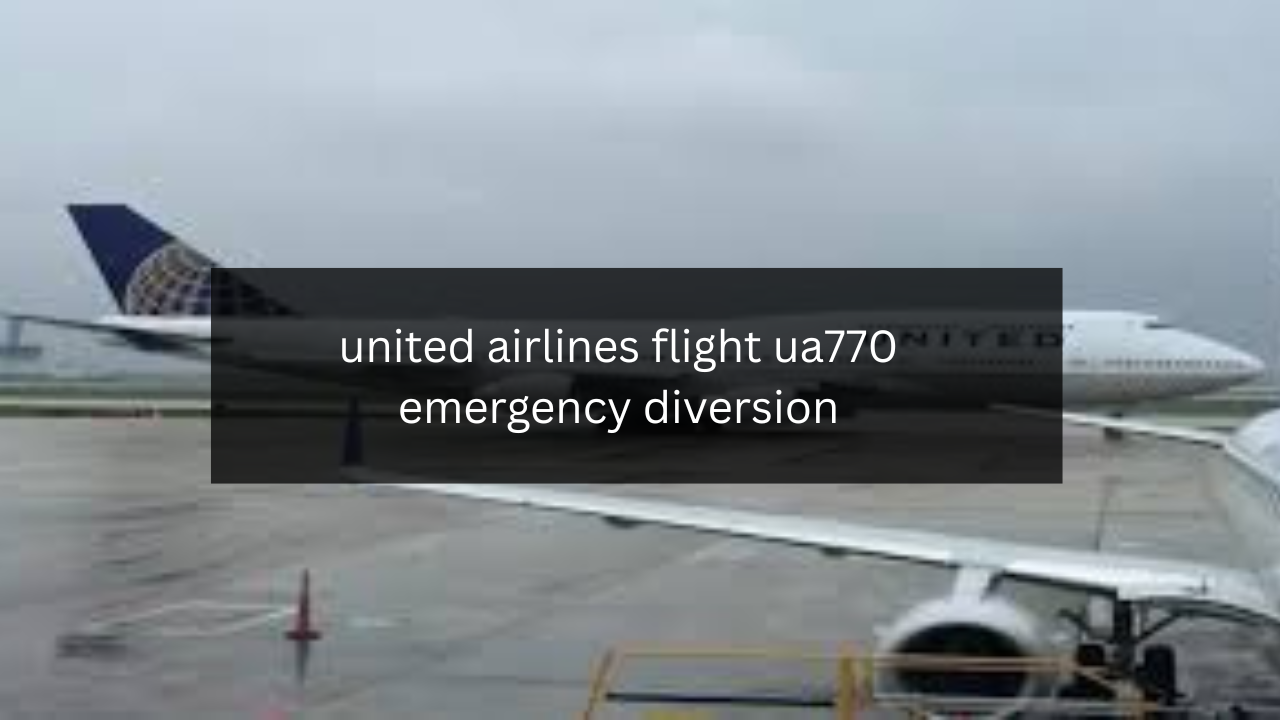Introduction
Air travel can be a thrilling experience, filled with anticipation and adventure. But what happens when things take an unexpected turn? That was the reality for passengers aboard United Airlines Flight UA770. On that fateful day, travelers found themselves in a situation no one hopes to encounter—a mid-flight emergency diversion. The incident raised eyebrows and sparked conversations about safety protocols while also showcasing the resilience of those on board. Let’s dive into what unfolded during this dramatic event and how it impacted everyone involved.
What Happened on United Airlines Flight UA770?
On a routine flight from Los Angeles to New York, United Airlines Flight UA770 experienced an unexpected emergency. Midway through its journey, crew members reported technical issues that raised immediate concerns for passenger safety.
The aircraft was cruising at altitude when alarms sounded in the cockpit. The pilots quickly assessed the situation and decided on a course of action. They informed air traffic control about their intention to divert to Denver International Airport.
Passengers felt a palpable shift in atmosphere as they were briefed by the cabin crew. Some expressed anxiety, while others remained calm, trusting the airline’s expertise. The anticipation grew as the plane altered its path, reassuring those onboard that safety was paramount.
As it descended toward Denver, moments turned tense but focused on securing everyone’s well-being. Landing safely became the top priority amid uncertainty surrounding the situation unfolding onboard.
Passengers’ Reactions and Experiences
The moment the announcement came over the intercom, a mix of emotions rippled through the cabin. Some passengers looked anxious, while others remained surprisingly calm.
Many pulled out their phones to capture updates and share their experiences on social media. The atmosphere turned electric as everyone began speculating about what was happening.
Families clutched each other’s hands tightly, exchanging worried glances. Others tried to lighten the mood with laughter or conversation, attempting to distract themselves from uncertainty.
As flight attendants moved through the aisles offering reassurance, some passengers expressed gratitude for their professionalism amidst chaos. Many shared stories of previous flights where they felt less secure.
When turbulence struck during descent, gasps echoed in response. Yet once on solid ground, relief washed over them like a warm blanket as they disembarked safely—united by an experience that would be etched in memory forever.
Emergency Diversion Protocol
Emergency diversion protocol is a critical aspect of aviation safety. When unexpected situations arise, pilots must act swiftly and decisively to ensure passenger safety.
Typically, this protocol involves assessing the severity of the situation. The flight crew communicates with air traffic control to determine the best alternative airport for landing. Factors such as weather conditions, runway availability, and proximity play vital roles in decision-making.
Once a diversion is confirmed, passengers are informed promptly. Transparency helps alleviate anxiety during tense moments. Cabin crew prepares everyone for landing by securing loose items and ensuring that seatbelts are fastened.
Behind the scenes, ground teams at the chosen airport spring into action. Medical personnel may be on standby if needed once the aircraft lands safely. This coordinated effort emphasizes how crucial teamwork is during emergencies in aviation settings.
Response from United Airlines
United Airlines promptly addressed the situation following the emergency diversion of Flight UA770. They prioritized communication, ensuring that information reached passengers and their families swiftly.
The airline issued a statement acknowledging the incident. It emphasized their commitment to passenger safety and outlined immediate steps taken for support.
Customer service representatives were deployed to assist affected travelers at the diversion airport. United provided accommodations, food vouchers, and rebooking options for those needing alternate flights.
Moreover, they launched an internal investigation to assess what went wrong during this flight. This response reflects not only accountability but also a desire to enhance future operations and prevent similar incidents.
Passengers felt reassured by United’s quick actions amidst uncertainty. The airline’s focus on transparency helped maintain trust, even in challenging circumstances.
Impact on Travelers and Flights Worldwide
The emergency diversion of United Airlines Flight UA770 rippled across the aviation industry. Travelers experienced significant delays and disruptions that day, as the flight’s unexpected turn created a domino effect on schedules.
Airports witnessed an influx of passengers from redirected flights, leading to crowded terminals and longer wait times. Many were left scrambling for rebookings or accommodations in unfamiliar cities.
Moreover, airlines worldwide reassessed their own protocols. They aimed to ensure readiness for similar scenarios, emphasizing safety measures and swift communication with passengers.
Travelers became more aware of emergency procedures, fostering a sense of vigilance during flights. This incident served as a reminder that air travel can be unpredictable but has extensive systems in place designed for passenger safety.
Lessons Learned and Improvements Made by United Airlines
The emergency diversion of United Airlines Flight UA770 prompted a thorough review of safety protocols. Lessons learned from this incident are invaluable for future operations.
United Airlines has since improved communication strategies with both passengers and crew. Clearer instructions in emergencies can help reduce anxiety and confusion during critical moments.
Additionally, the airline is enhancing training programs for flight crews to better handle unexpected situations. This includes simulations that mimic real-life scenarios, ensuring readiness at all times.
Investments in technology have also been prioritized. Upgraded navigation systems allow pilots to make informed decisions quickly during emergencies.
Feedback from passengers has led to a focus on customer service enhancements. Creating a supportive environment helps those affected by stressful events feel more secure and cared for moving forward.
Conclusion: Ensuring Passenger Safety in the Future
Passenger safety is paramount in the airline industry. The incident involving United Airlines Flight UA770 serves as a reminder of the unpredictable nature of air travel. It highlights not only the importance of emergency protocols but also how airlines must remain vigilant in their training and preparedness.
As we reflect on this event, it’s clear that improvements can always be made. United Airlines has already begun to implement changes based on lessons learned during the diversion process. Enhanced communication strategies with passengers are being prioritized, ensuring they remain informed throughout any unexpected situations.
Moreover, continuous training for flight crews will play a crucial role in handling emergencies more effectively. These measures create an environment where passenger confidence can flourish despite challenges.
Travelers should feel assured that airlines are dedicated to making flying safer every day. The commitment shown by United Airlines post-incident reinforces this belief. With ongoing improvements and a focus on safety, passengers can look forward to future flights with renewed trust in air travel’s reliability and security.




